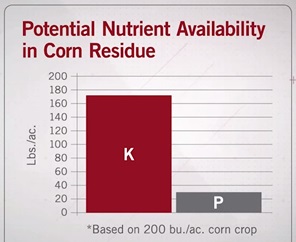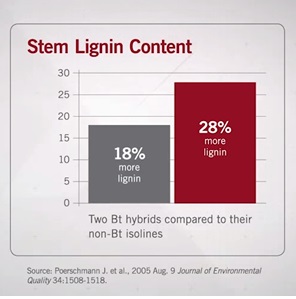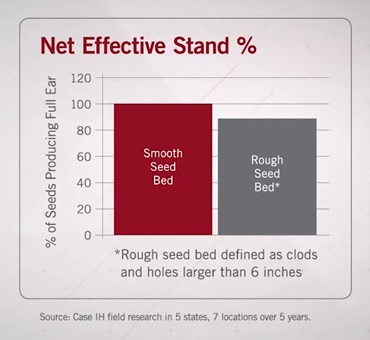Challenges after harvesting and how to deal with them
Following harvest professional producers today face three important challenges, the first his crop residue management, also growers need to eliminate compaction and reestablish the pore space into the soil to improve internal drainage and water holding capacity, the final step is to level the soil afterwards so that all the corn plants can come up and emerge uniformly.
Crop residue management today presents several challenges or opportunities for producers, the first is to look at the nutrient value residues after harvest, and see if we can cycle those back for the following prop year. In corn stalks studies show that up to 175 pounds of potash potentially are held in the stocks following harvest, and 25 pounds of phosphorus. If these stocks are size and mix into the soil profile those nutrients camping liberated cycle and available to the prop next year.
Another challenge for growers today is just operational obstacles that some other new hybrids present. The steak green characteristics and longer here feel periods, as well as, enhance signification in some hybrids presents challenges for machinery and planting practices in spring, if not managed in the fall following harvester. The liquefied hybrids can be persistent in the soil C that for several seasons, some studies will show that as much as 20-30% higher magnification levels in the stocks versus the parent isolines.
The third challenge or opportunity in crop residue management really has to do with soil organic matter. Today we hear a lot about cellulosic ethanol removal up residues from fields, or that tillage can actually reduce soil organic matter; as residues are incorporated into the soil they do decompose overtime and can leave stable organic matter forms in soil profile to enhance exchange capability and nutritive holding capacity of the soil. The residue will decompose and, as long as we don’t overdo we can see soil organic matter levels actually accumulated.
Studies have shown that what will happen over protracted periods of time to increase the water holding capacity and fertilizer holding capacity of the field. One other thing that holds back crops from reaching their potential is soil compaction. Roots can’t explore the whole profile for their nutrients water is not obtain fully to get through drought stress period, and so by managing compaction we can improve the route better soil.
One of the most critical elements of combination for primary tillage is soil output, by reducing the clot size to 6 inches or less, growers can dramatically reduce the risk emergence problems in the spring as much as 10 percent instead can be in jeopardy closer to big all the holes they roll out a are left in the field in spite of overwintering.
If done successfully crop residue management, compaction management, and seabed management can be done in full combination primary tillage and contribute greatly to appeal to your potential.
The first operation in combination for primary tillage is crop residue management this is done with the call taker CASE IH 875X disc frame, in its gangs the call taker 875 features 26 in earth metal blades. These blades are formed from metal that is from original iron sources, not recycled steel.
If you want to see more about CASE IH 875X, click here.





